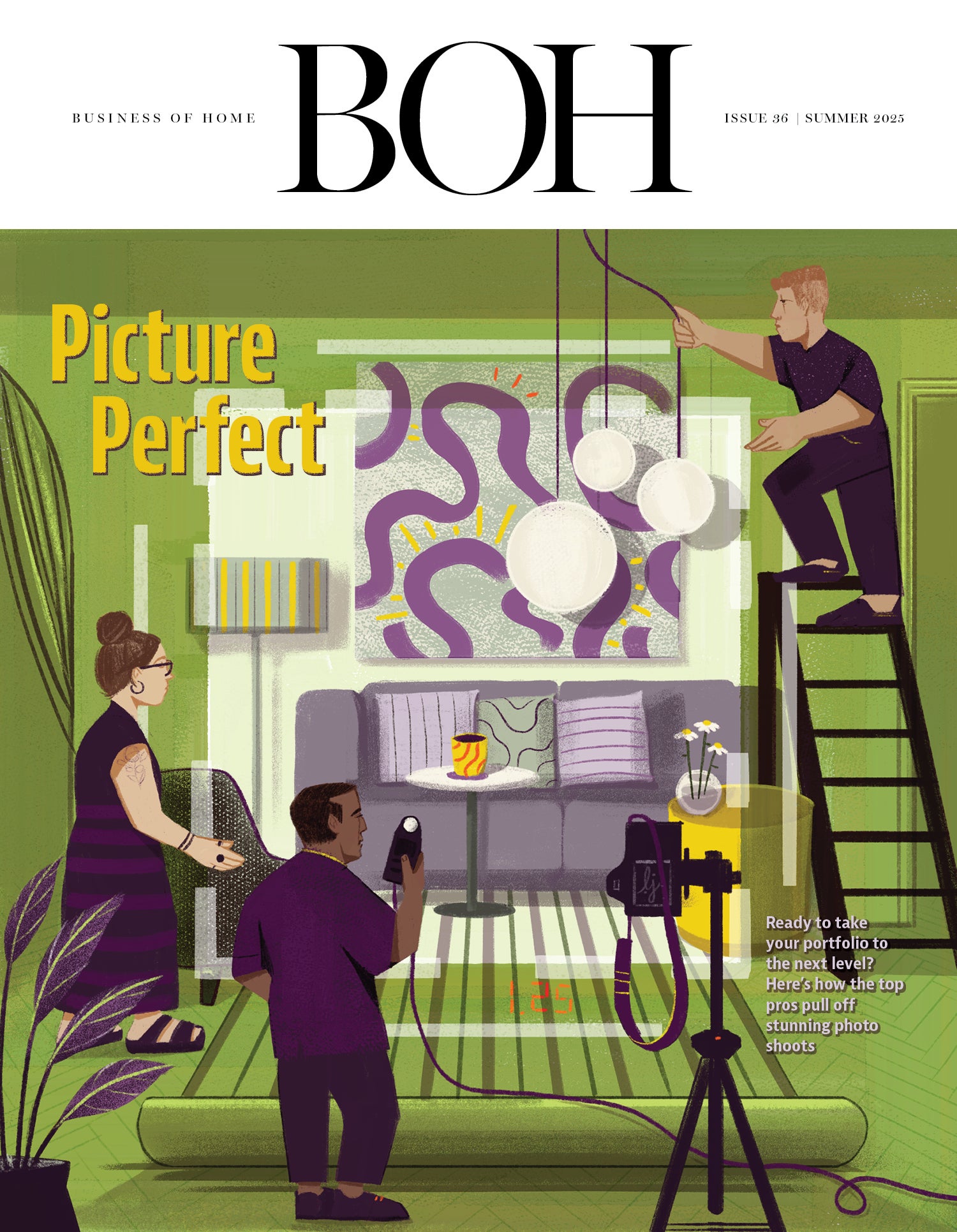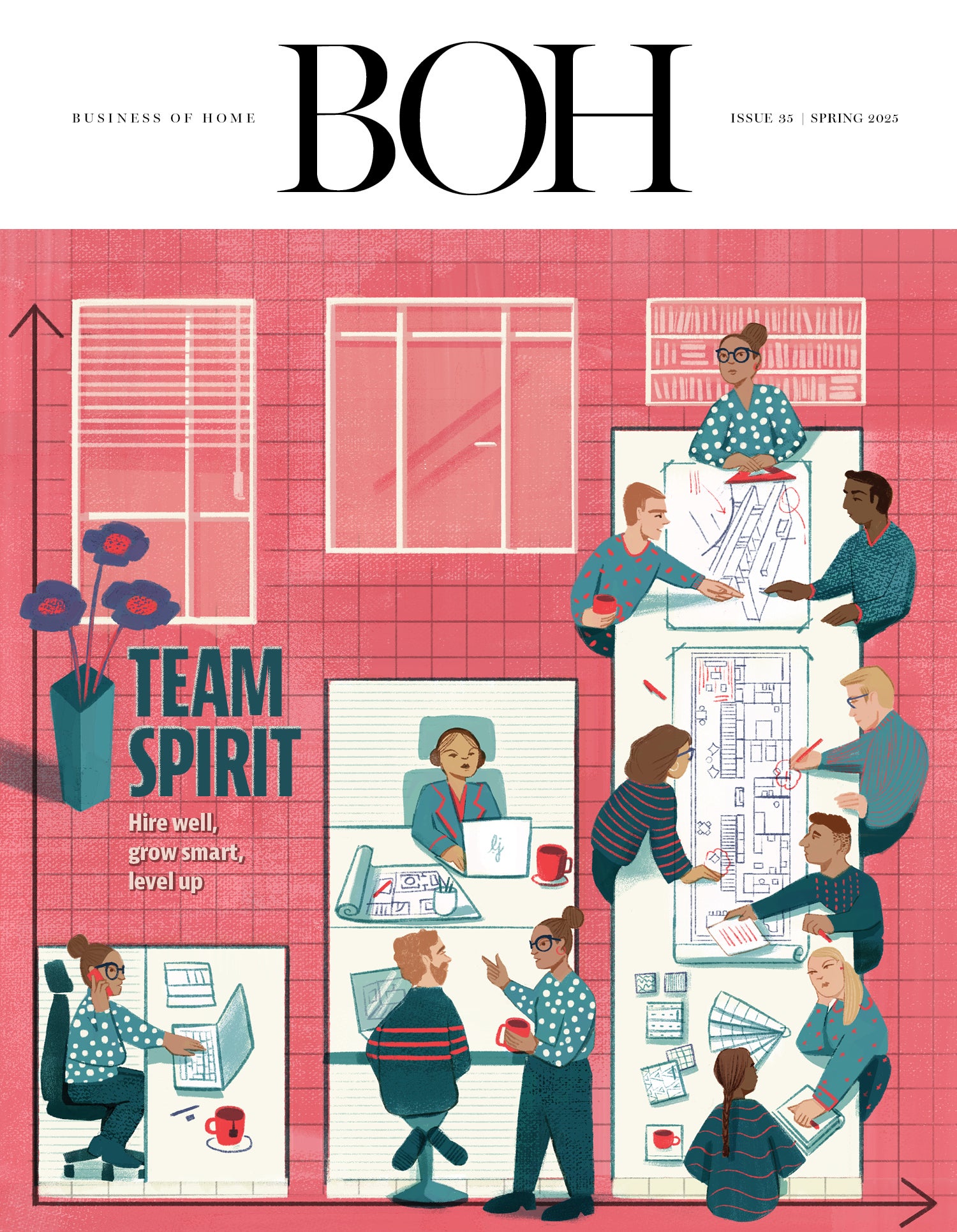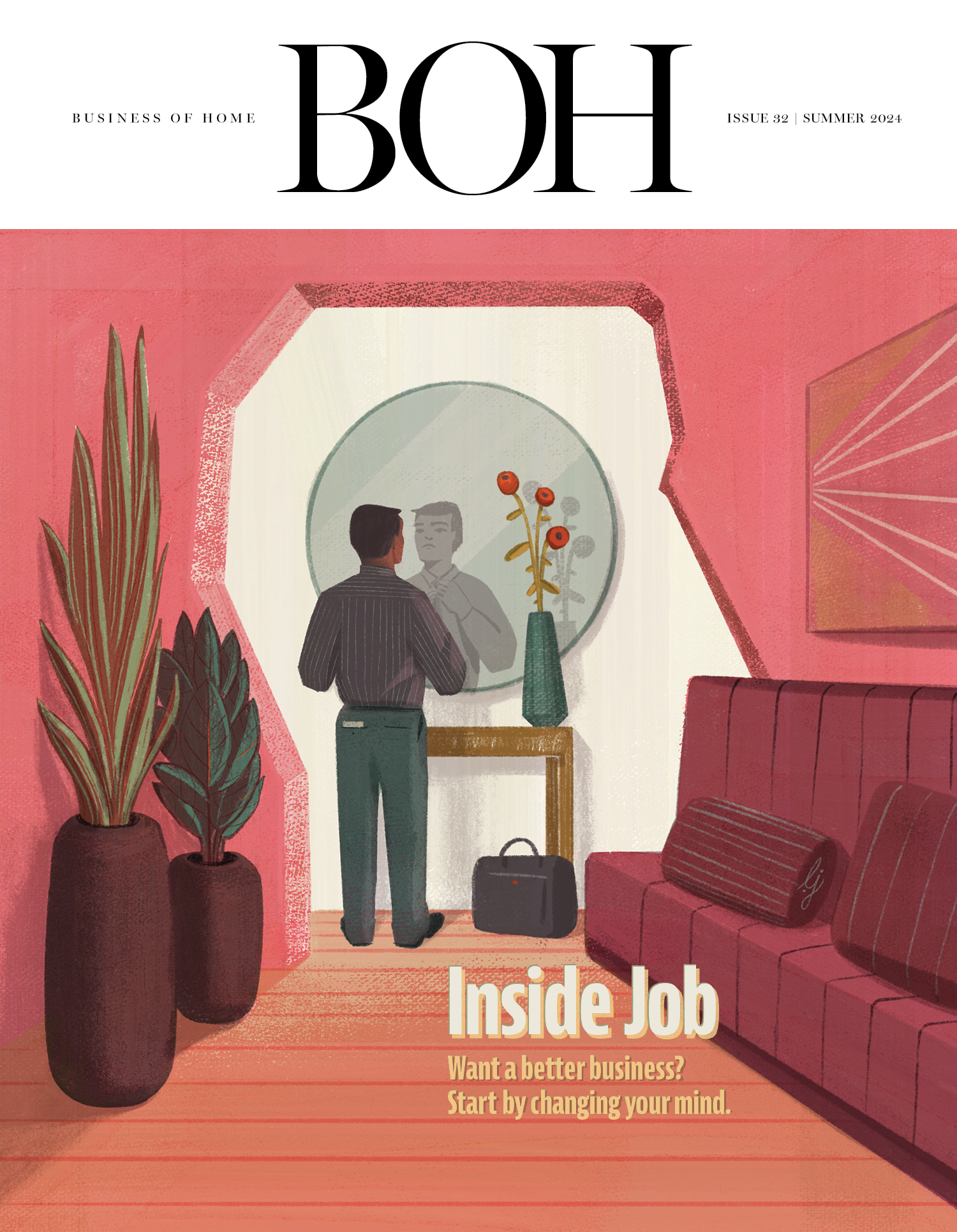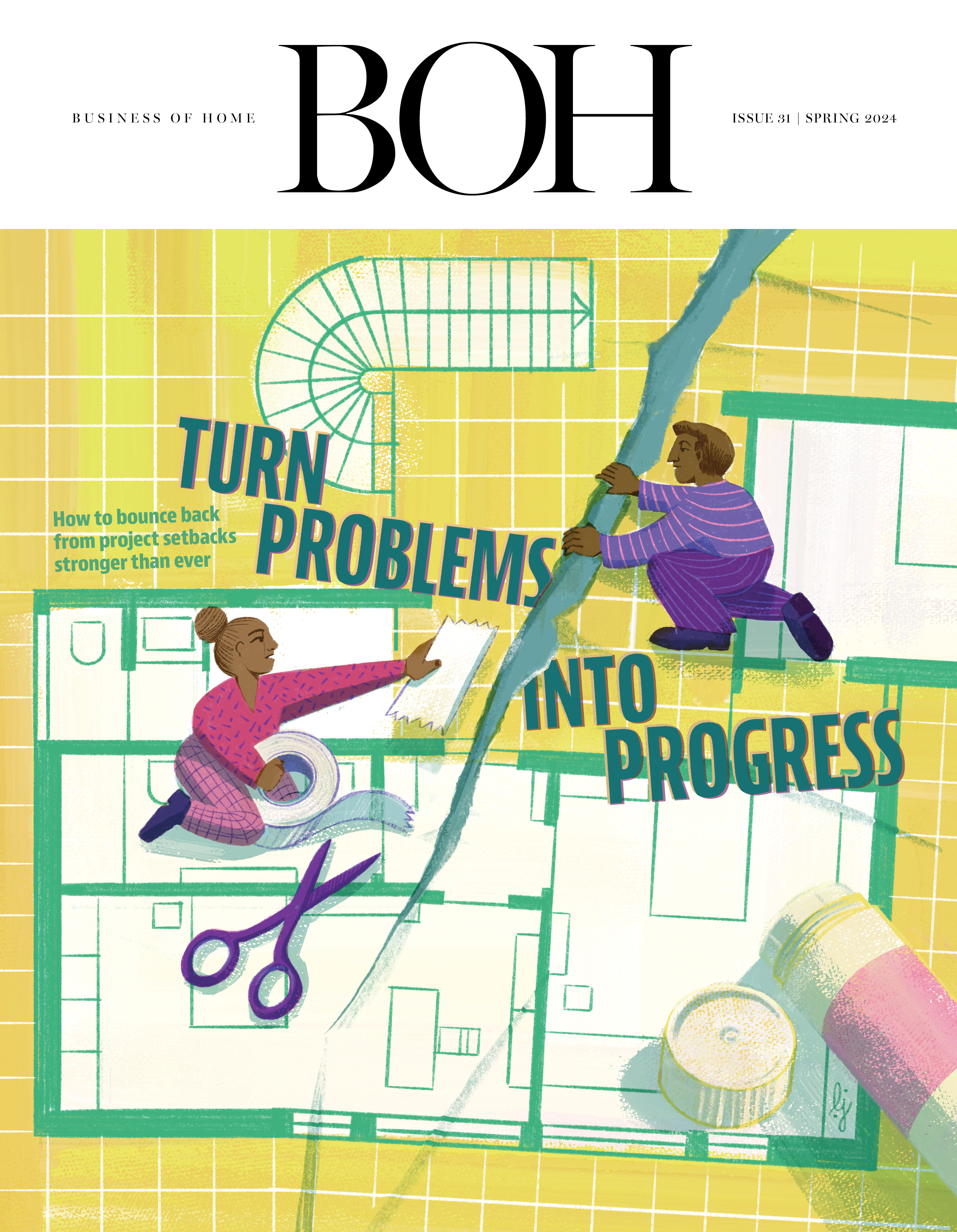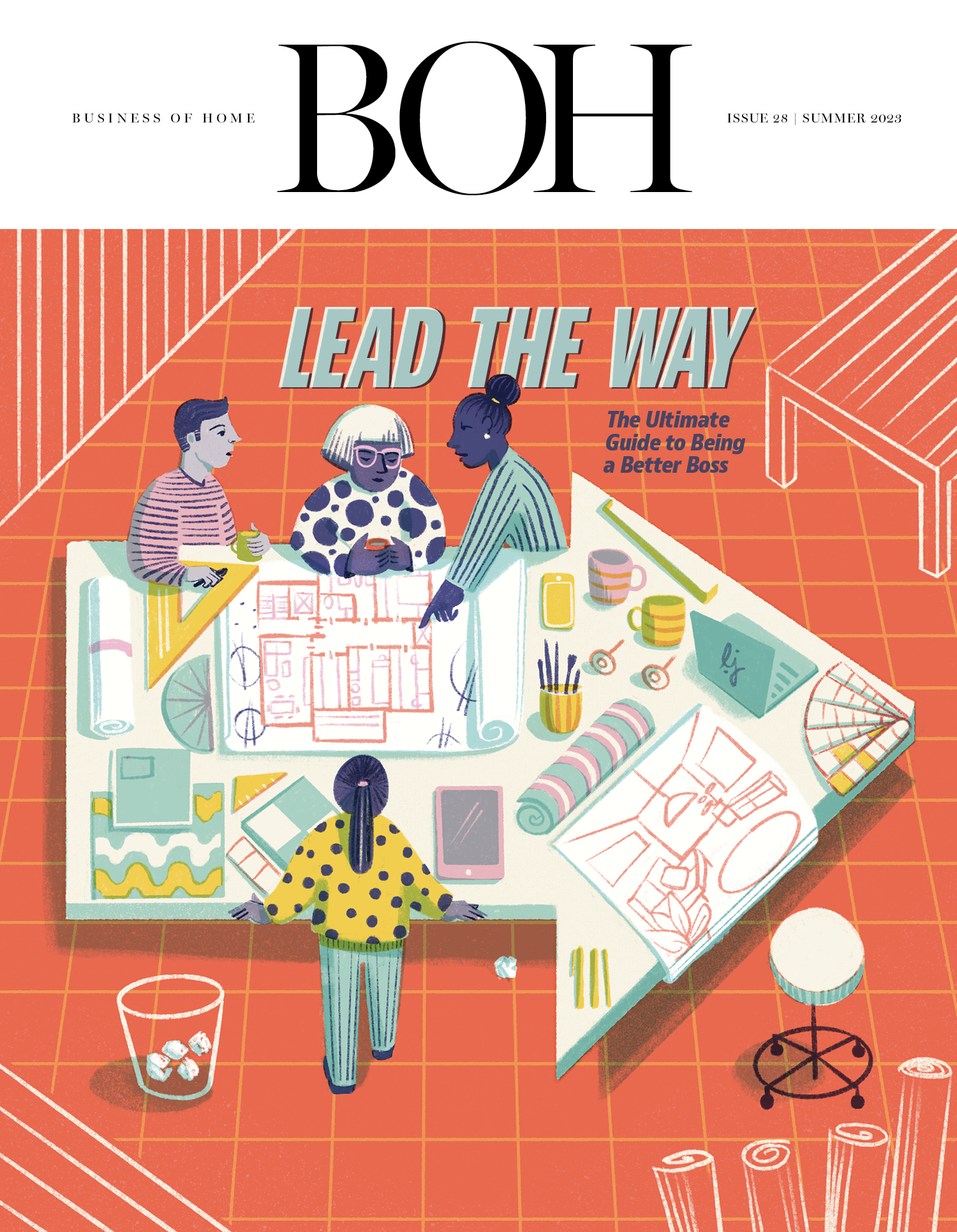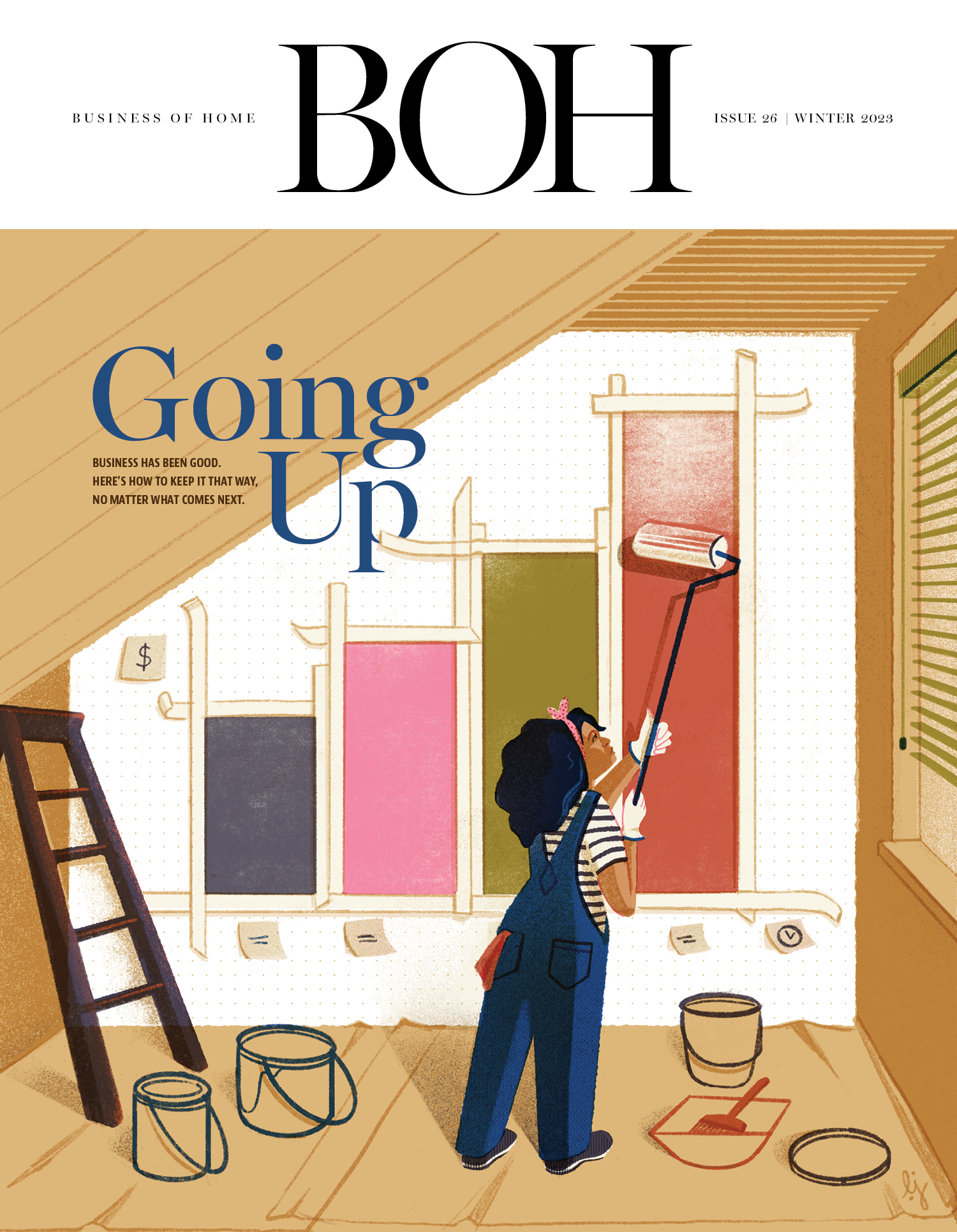Launching a design firm is no small feat. Often, it’s the result of years of financial planning, schooling, or hard work in service of another principal or another industry entirely. Becoming an entrepreneur feels like crossing a threshold—but for many firm owners, it’s neither the last nor the biggest leap they’ll take in their careers. This year on the Trade Tales podcast, designers from across the country joined Business of Home editor in chief Kaitlin Petersen to share the major shifts and shake-ups they underwent to produce a firm aligned with their values and long-term goals.
Here, we’ve curated some of the best insights designers divulged on the podcast this year. If you’re not already a listener, subscribe on Apple Podcasts or Spotify to get new episodes every other Wednesday.
Team Structure Overhaul
Several years ago, Amy Storm was confounded to find that despite a steady pipeline of projects, her firm wasn’t making it out of the red. She enlisted the help of a business consultant, who helped her execute a massive overhaul of a team structure that had been heavily reliant on part-time assistance.
“I basically said, ‘Within the next year, we need you all to become full-time, or we need to let you go and bring in somebody else,’” says Storm. “With that comes drama and sadness. … Not everybody wants to go in the same direction you want to go. Once I was able to not be so emotionally affected by that, we were able to step into [the mindset of] ‘Let’s hire the right people for the work and change the way we’re doing things.’”
Trust Your Vision
Ali Budd’s design career was almost over before it began. After college, she considered pursuing law school until a conversation with her family reminded her where her passion truly lay. “My father basically said to me, ‘If you weren’t scared, what would your choice be?’ and I was like, ‘I want to go to design school,’” says Budd.
Though she launched her own firm a few years later, the process of finding her voice wasn’t over yet. Once she gave herself permission to embrace the freedom of full expression via social media—and more importantly, to quit comparing herself to fellow creatives—a world of possibilities opened up. Today, that artistic confidence has landed Budd her own TV show, along with a team inspired to carry her vision further.
“I don’t think people talk enough about how challenging it is, from a creative perspective, to find your own voice [and] be confident enough to use it,” she says. “The biggest thing for me was to stop trying to emulate other people and just focus on what my gut would tell me was good and right and go with that.”
Take a Break
In 2022, Chloe Redmond Warner reached a breaking point. For nearly two decades, she had worked tirelessly to build a name for her firm—a successful effort, but somehow, running the business wasn’t getting any easier. In desperate need of a recharge, she planned a four-month sabbatical, during which she enjoyed family time, a ski race, a trip to Egypt and a new gardening hobby. When she returned to work, she expected to jump back into her routine; instead, she saw her firm with fresh eyes.
“My vision was that I would be super refreshed—and that didn’t happen,” says Redmond Warner. “But then I saw the office, and I was like, ‘Oh, you don’t have to go back to doing things the way you had been doing them.’ It wasn’t that I got a break from those things; it was that I got to change and grow [during that time off]. I’m no longer tired, but it’s because I’m doing things differently.”
Know Your Worth
Swati Goorha’s charging strategy began as a flat fee—until she realized that her team was frequently running out the clock, pouring far more of themselves into each project than her rates reflected. The experience cemented her decision to switch to time billing, allowing her to properly value her services for the first time and transforming how clients perceived the firm’s talent and abilities.
“Because we [started] billing for our time the way we should, clients became more respectful of our time,” says Goorha. “Otherwise, people think our team members are their private assistants sometimes. I am all for being friends with my clients: I really do become close with [them]—I know everything about their personal life, and we go for coffee afterward, we go for dinner. But when we are working together, it’s important to have that client and service provider boundary.”
Deciding When to Delegate
The early years of Anissa Zajac’s firm were marked by frequent employee turnover. After losing the firm’s head of operations, who had helped get her business off the ground, she was at a loss on how to source talent. Following two failed efforts to restaff—which left her a solo entrepreneur for some time—she realized she was looking for help in all the wrong places. “I’m a horrible interviewer—it’s not my strength,” she says. “I’m a big believer in staying in your lane, and I have now employed other people to help me with the interview process.”
Revisiting and Refreshing Goals
Within a few short years of launching a firm, Brian Paquette had achieved nearly everything he dreamt of for his design business: a 12-person staff, a retail store and a rising profile in Seattle’s design scene. However, as his firm raced to keep up with its growth, Paquette found himself moving further away from the creative side of design—instead shuffling between meetings with team members as the company took on work he wasn’t excited about in order to cover its overhead.
“I loved the idea of a brand with all of these facets—the store, the lifestyle, the collections. You’re a personality, and you’re everywhere,” he says. “[But] I quickly realized that my social battery gets drained really quickly. I can do all of those things, but the aftermath of all that is not the healthiest [for me].”
Paquette soon set out to revamp his firm to align with his new outlook. The process involved stepping away from the store, downsizing to just one employee and finally getting back to day-to-day design work. It was the first wave in a series of pivots that he implemented in the years to follow, ranging from changing his firm’s social media and marketing approach to devoting a full year to refreshing systems. “Without all these systems and logistics and communications, the ‘pretty’ means nothing. The pretty is going to have a tarnish on it—and that tarnish is going to be your lack of communication, a question gone unanswered and a client feeling like they weren’t supported,” he says.
Diversify Design Offerings
Growth looks different for every designer—and for Kate Marker, it involved developing an entirely new kind of design business. Full-service design formed the bedrock of her firm, but a new era in hospitality began after she purchased and renovated a cottage in Michigan: the first in a series of vacation rentals where guests could get a taste of her style before taking the plunge.
A few years later, she added a third category to the mix: an e-commerce site called Kate Marker Home. The retail project began as a way for the designer to share her collection of vintage rugs with Instagram followers who coveted the unique pieces showcased in her projects, and it soon became another entry point for would-be clients, as well as a furnishing source for her rentals.
“The three parts of my business really complement each other. Kate Marker Home allows me to extend my design experience beyond residential projects—my everyday, full-scope projects—while vacation rental properties serve as tangible examples of my work,” she says. “Guests can potentially become interested in my design services or products after experiencing [another] part of my brand.”




